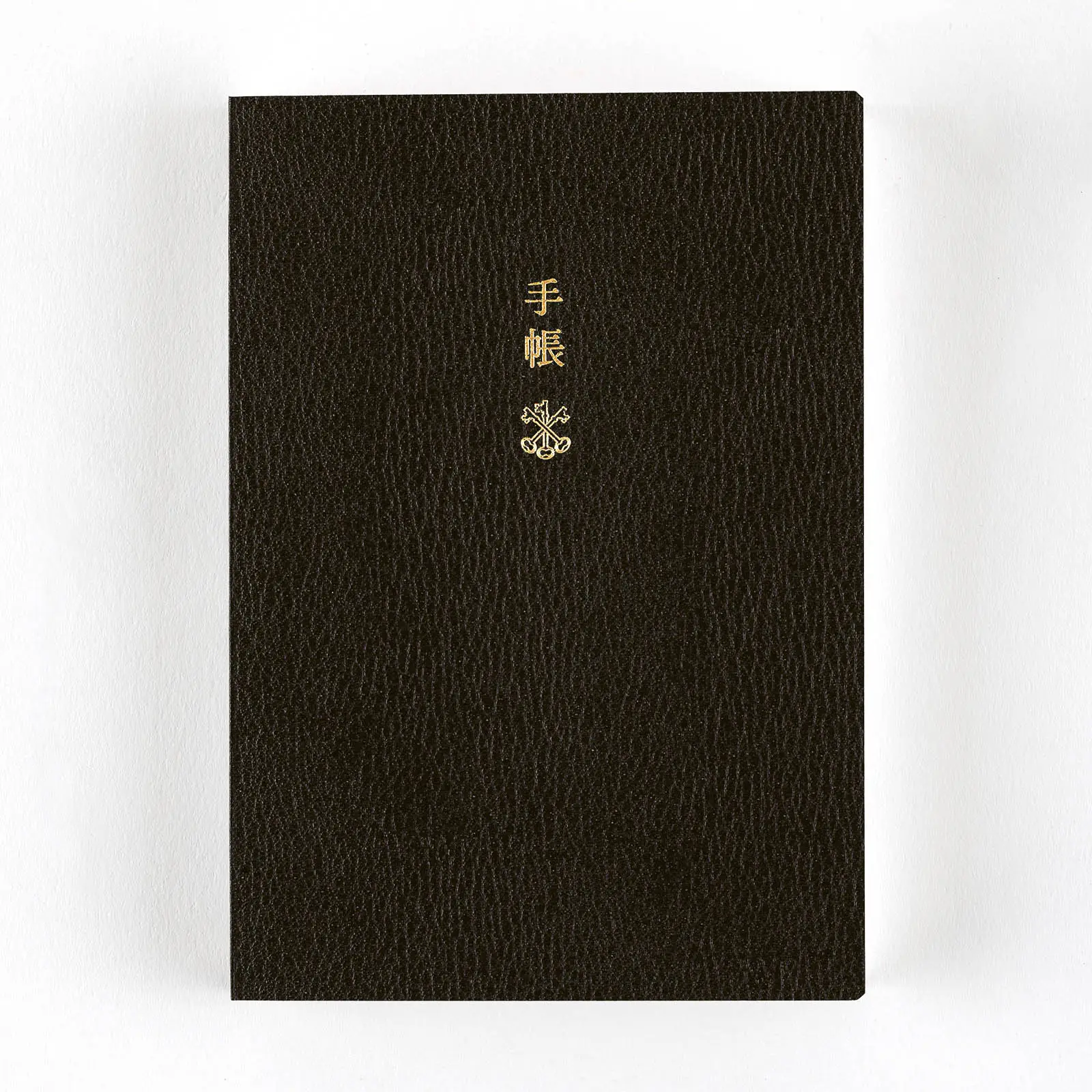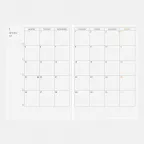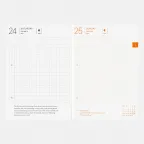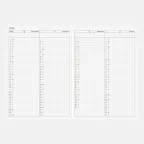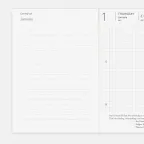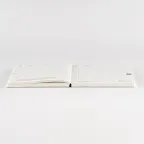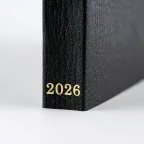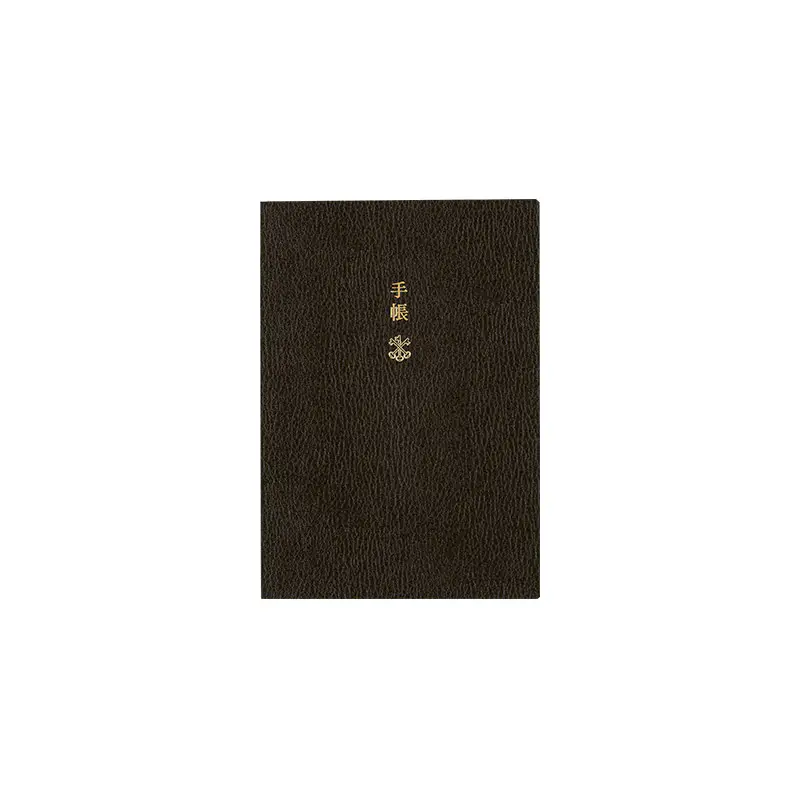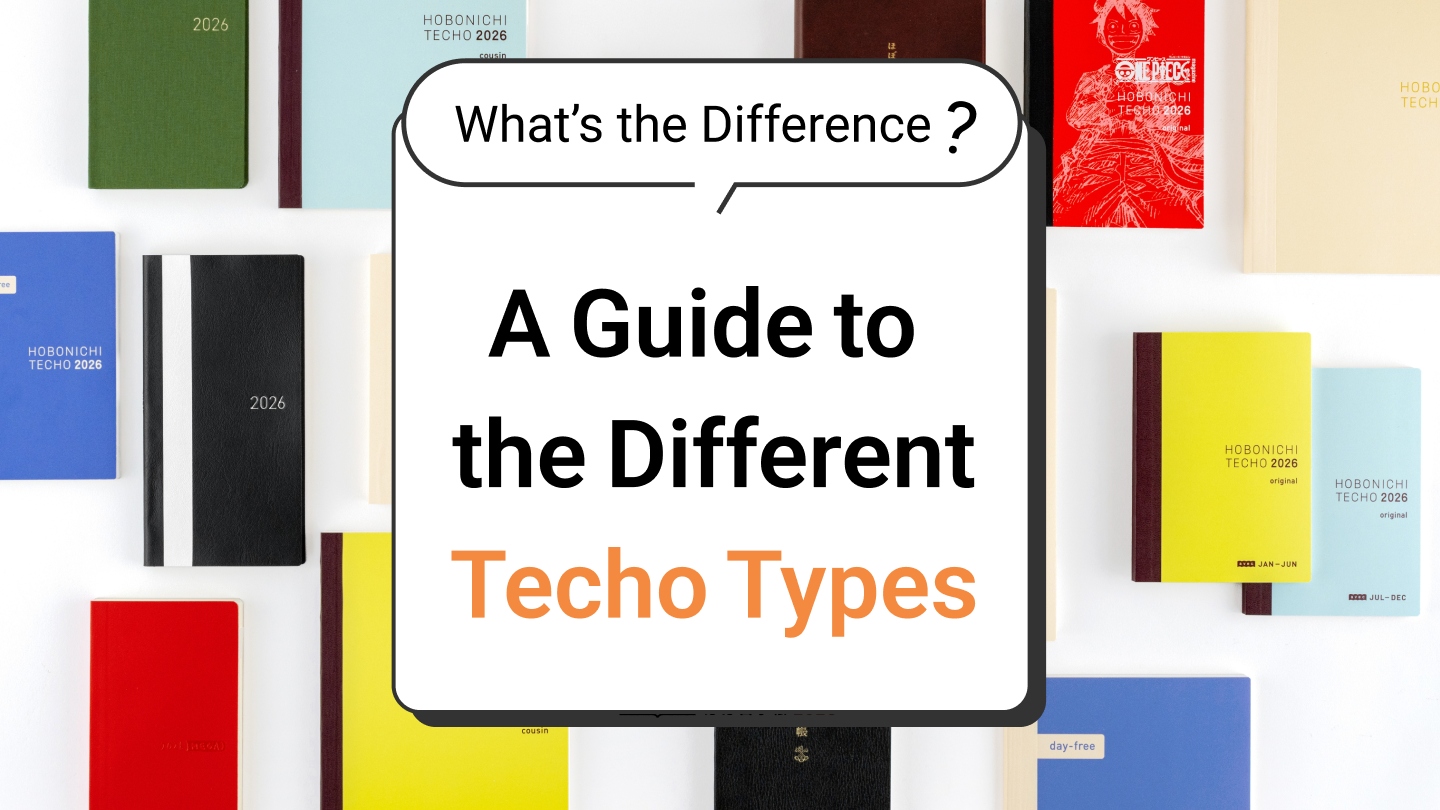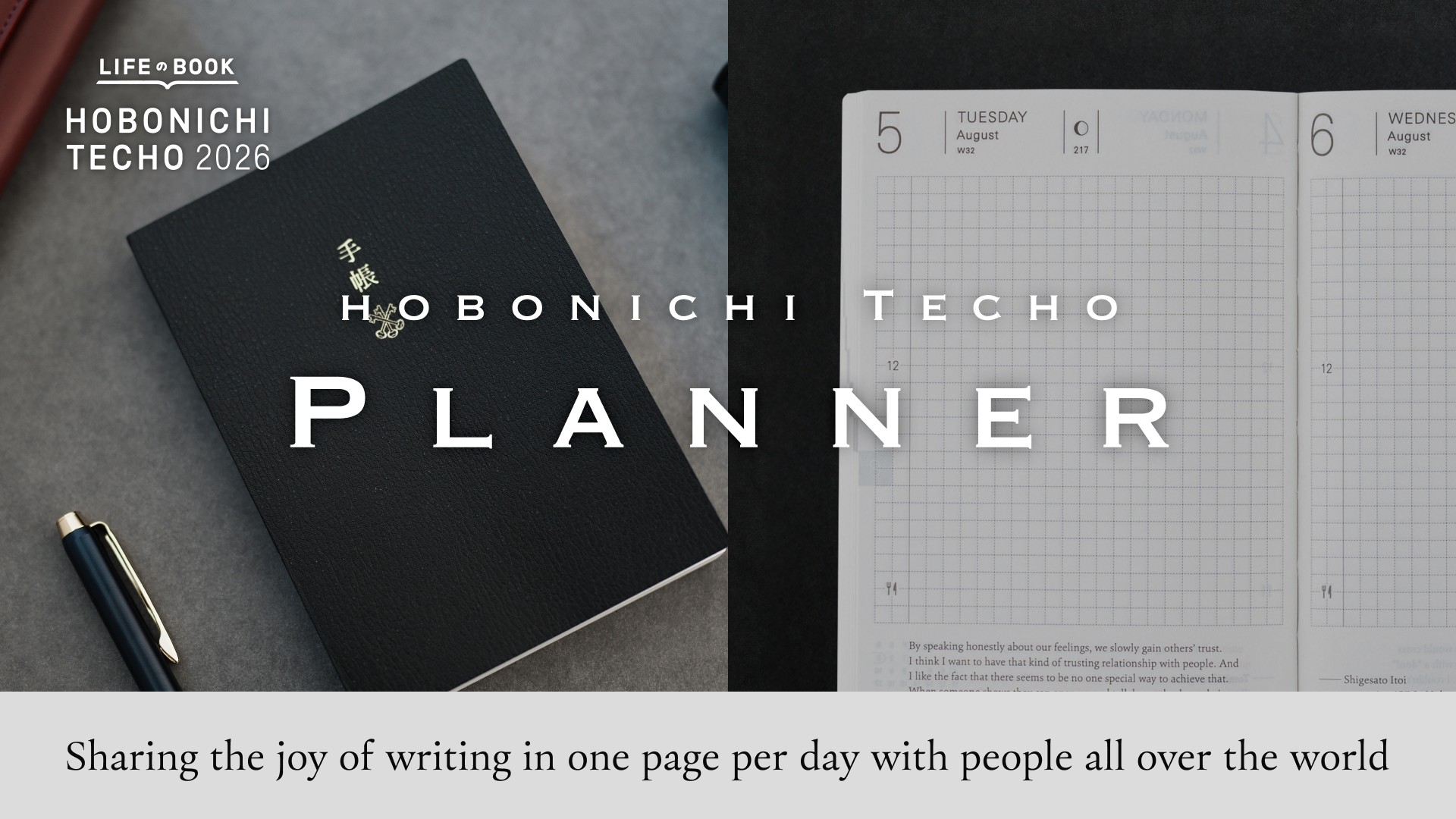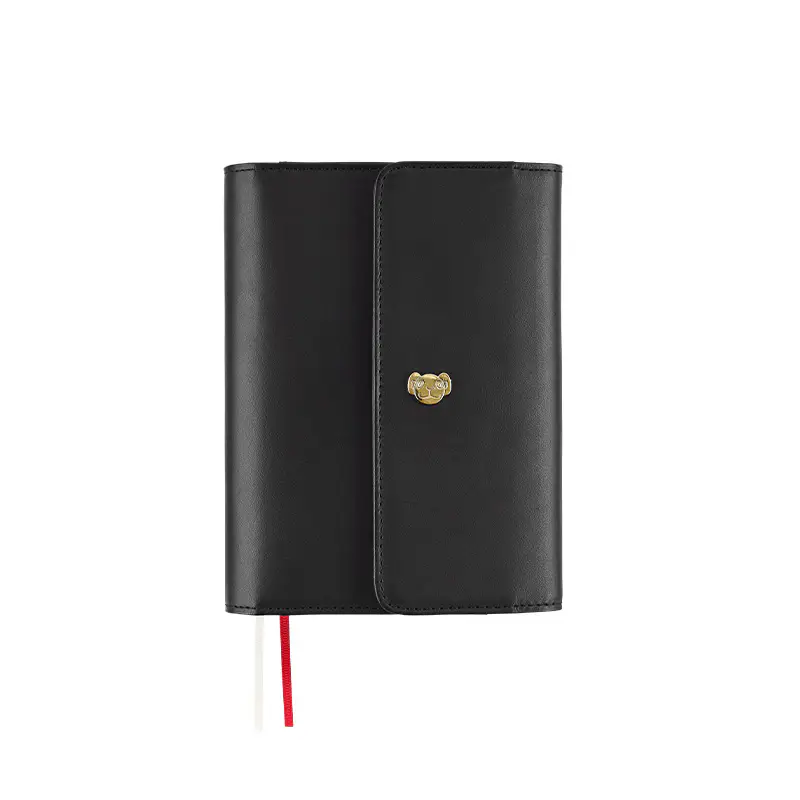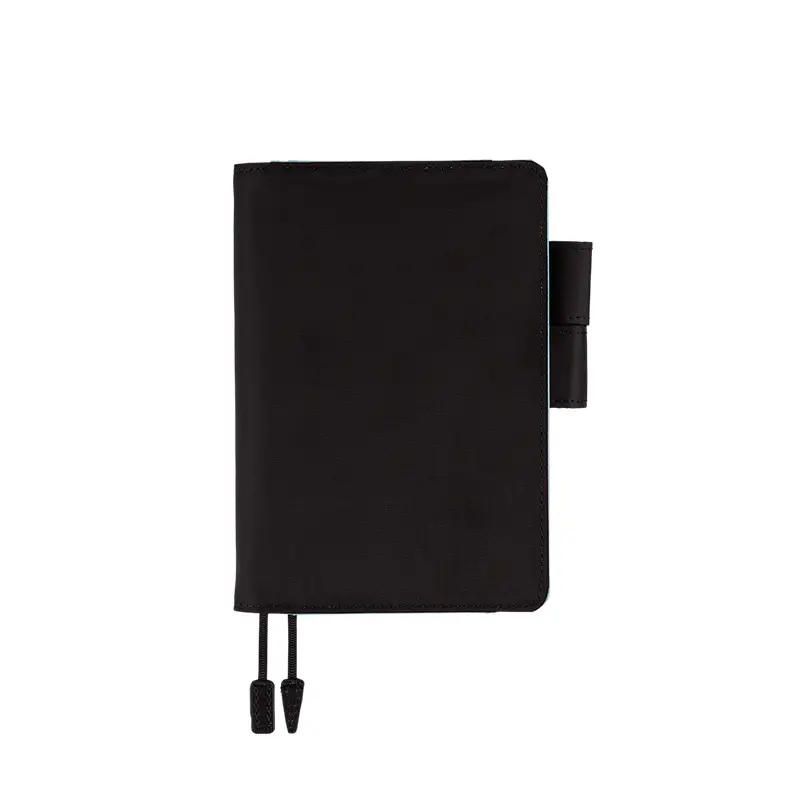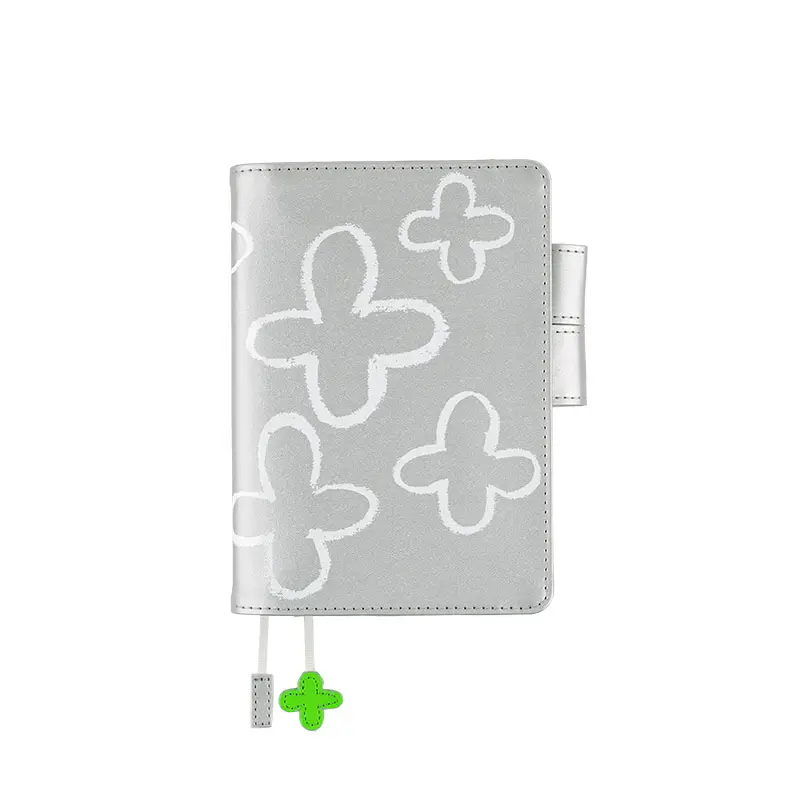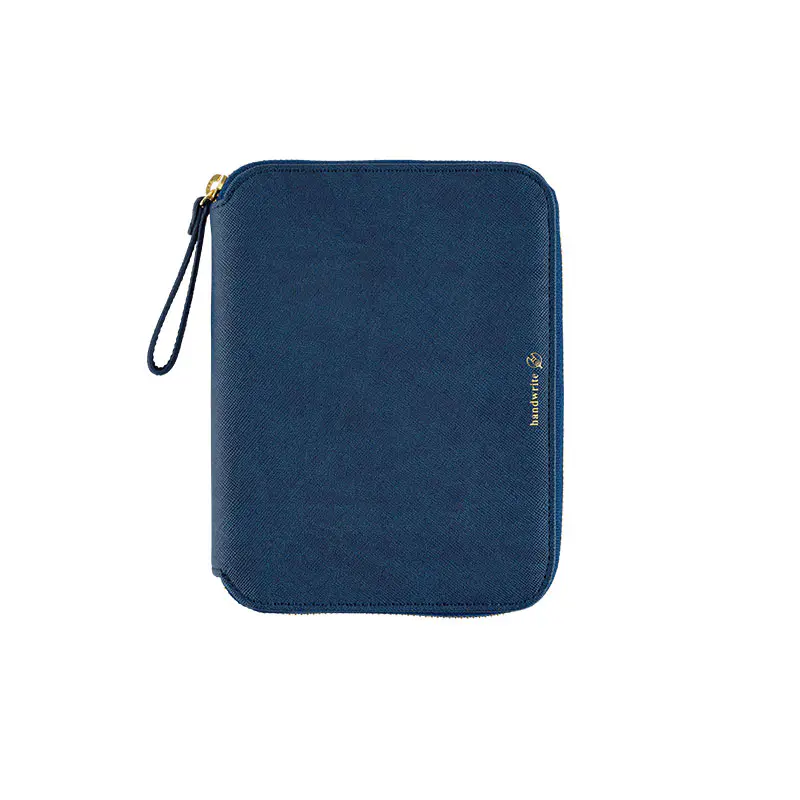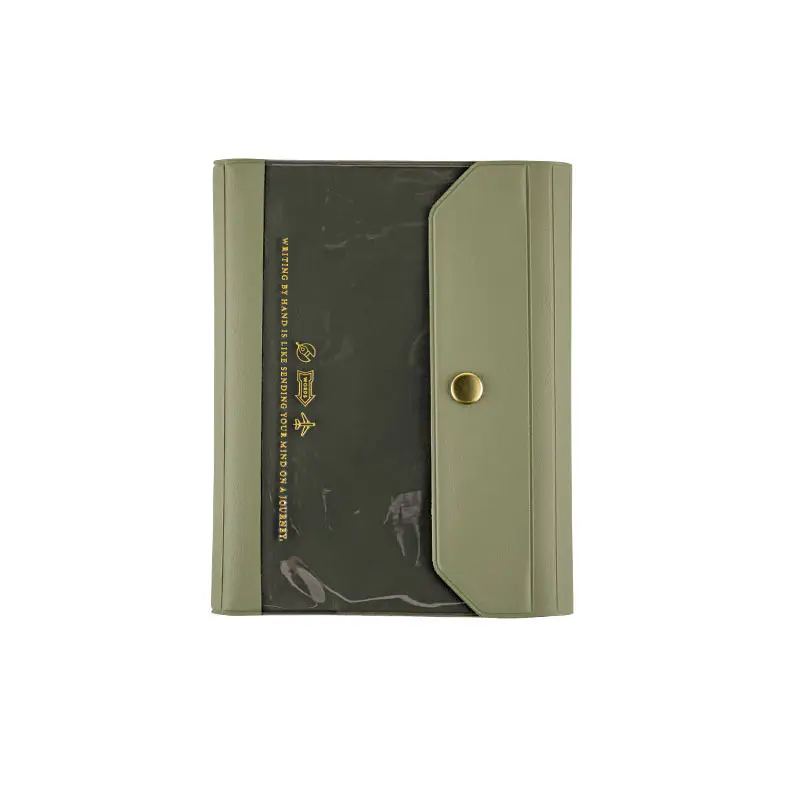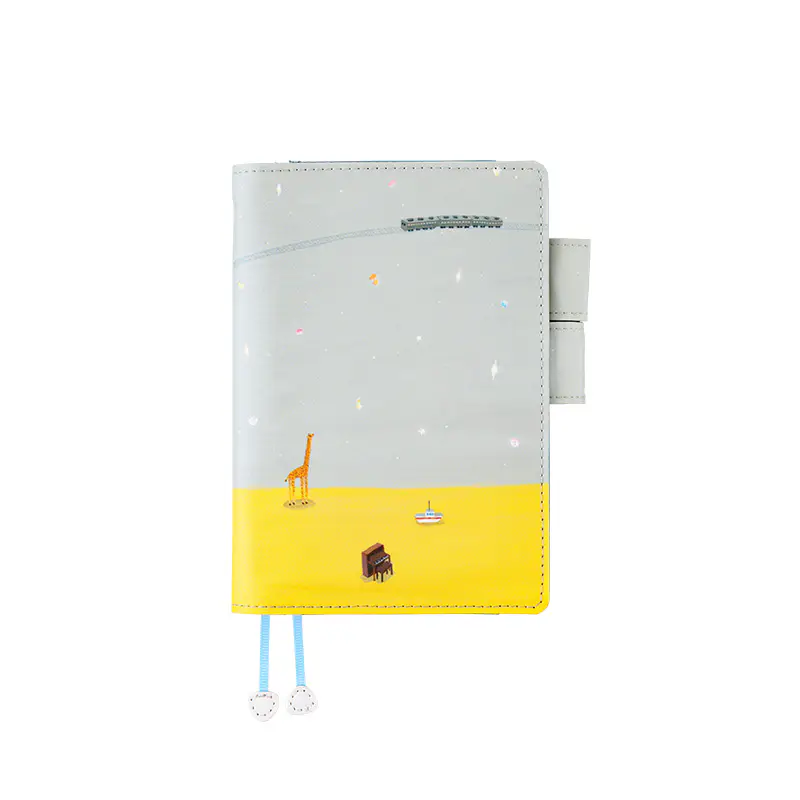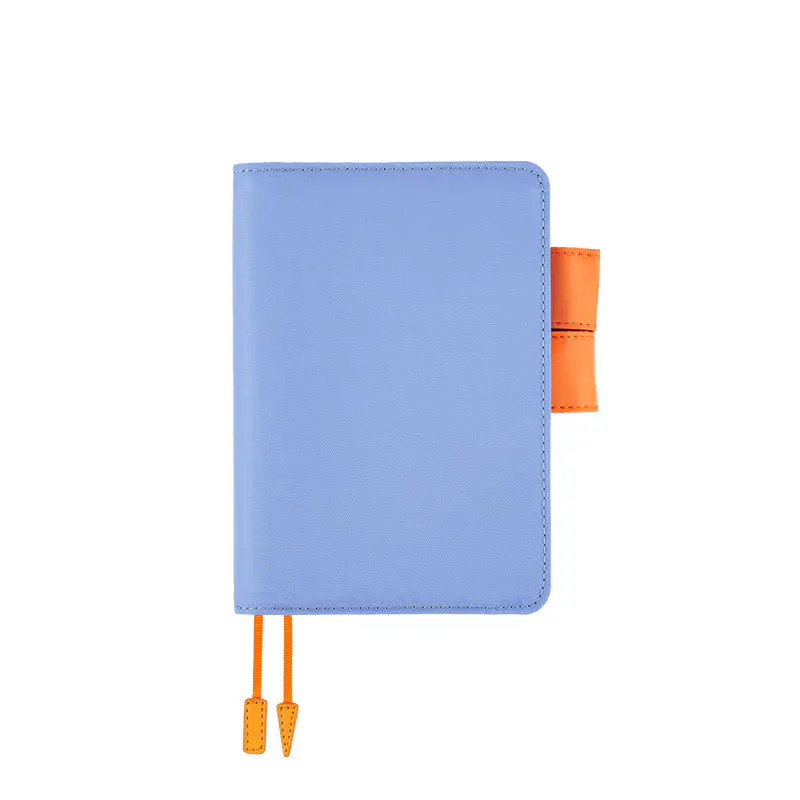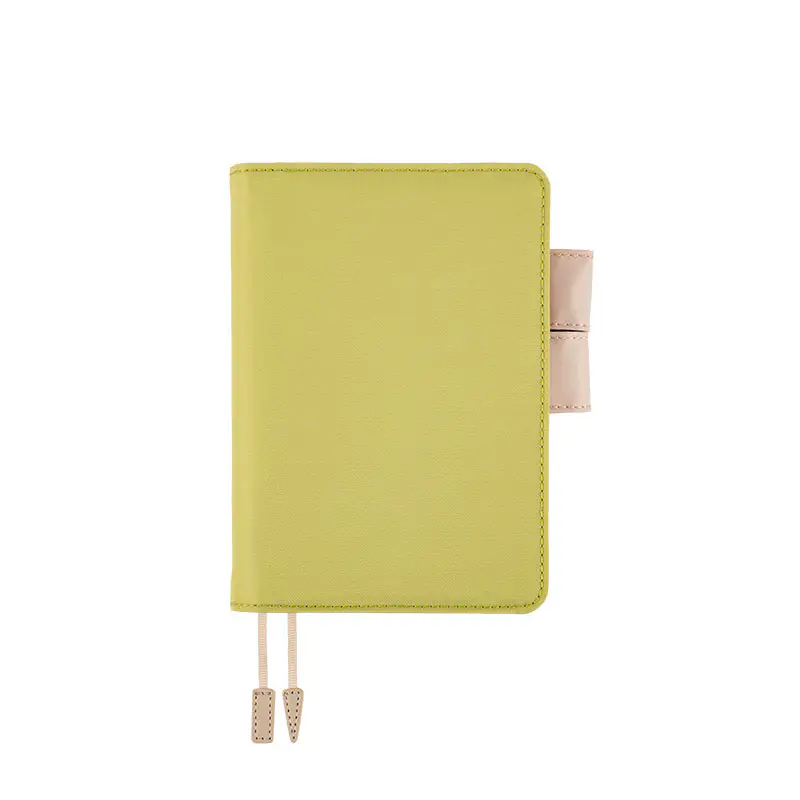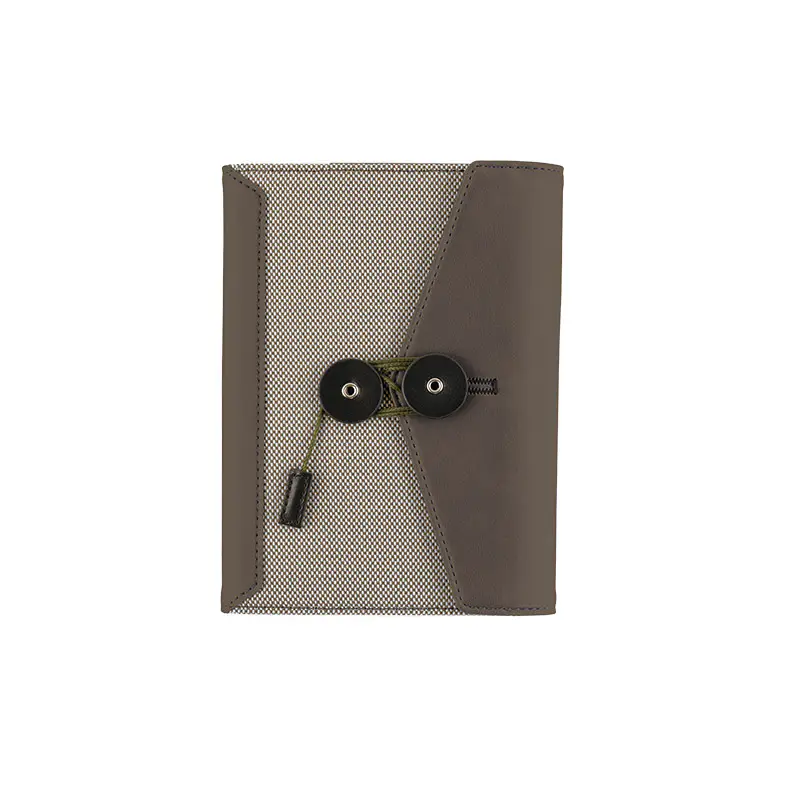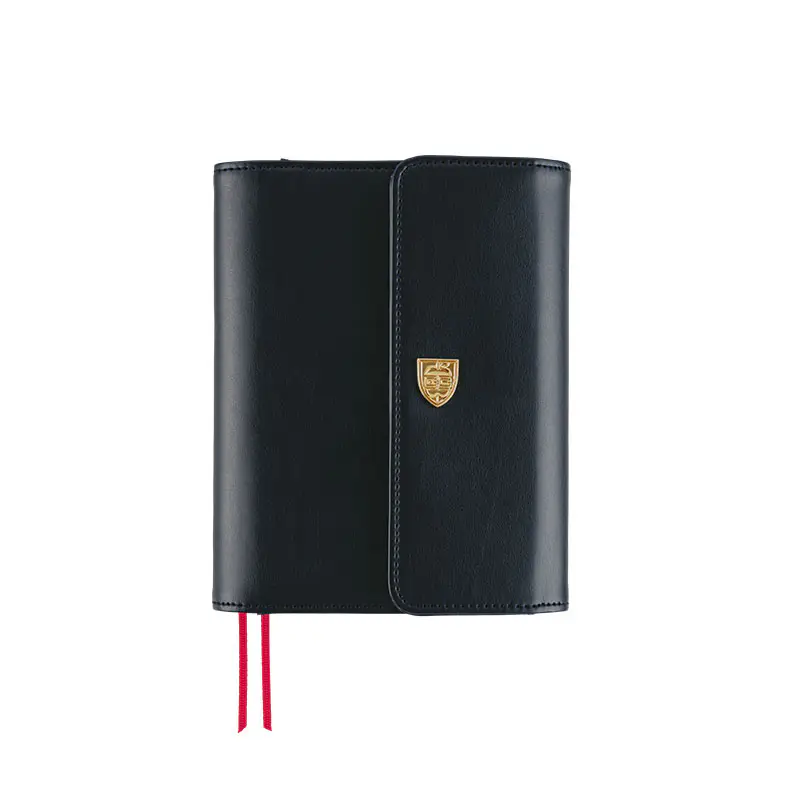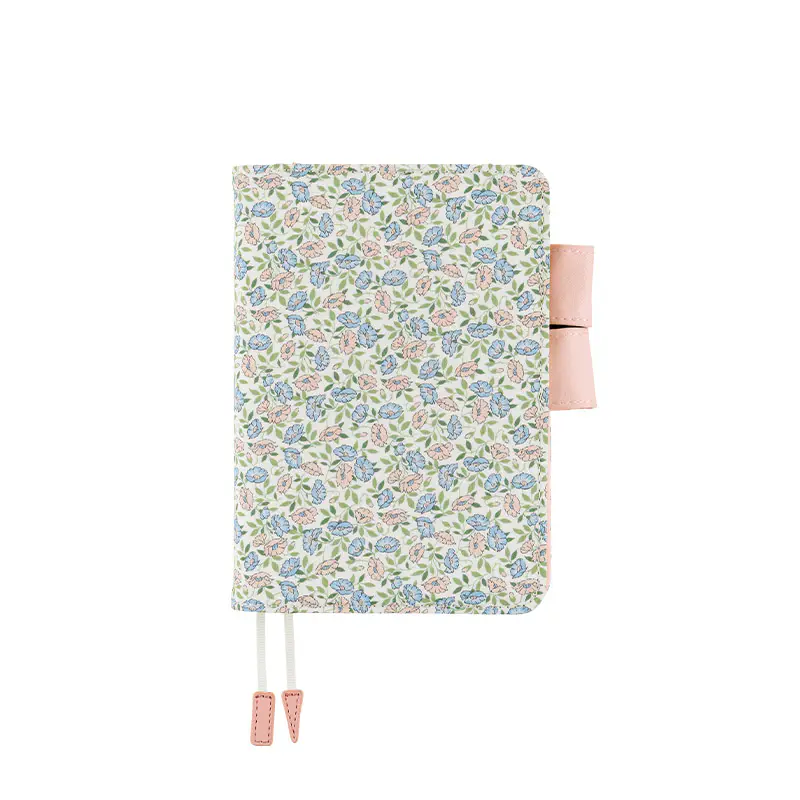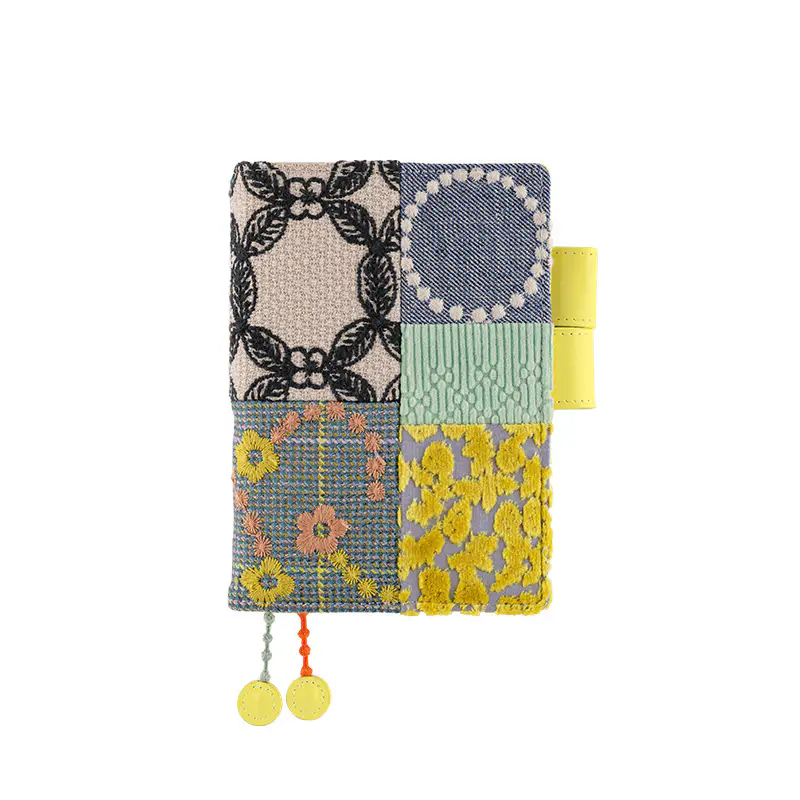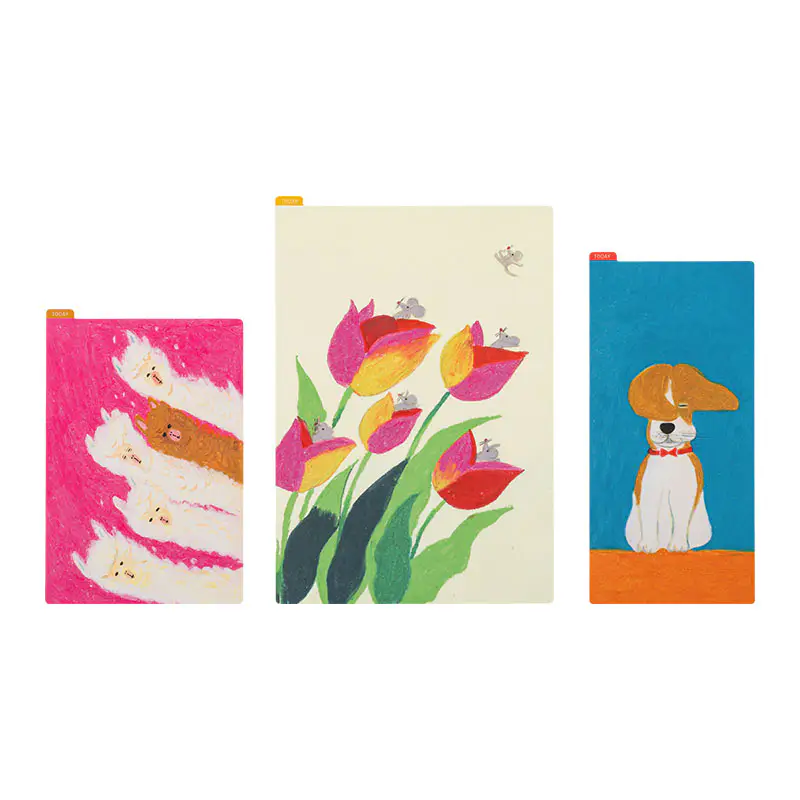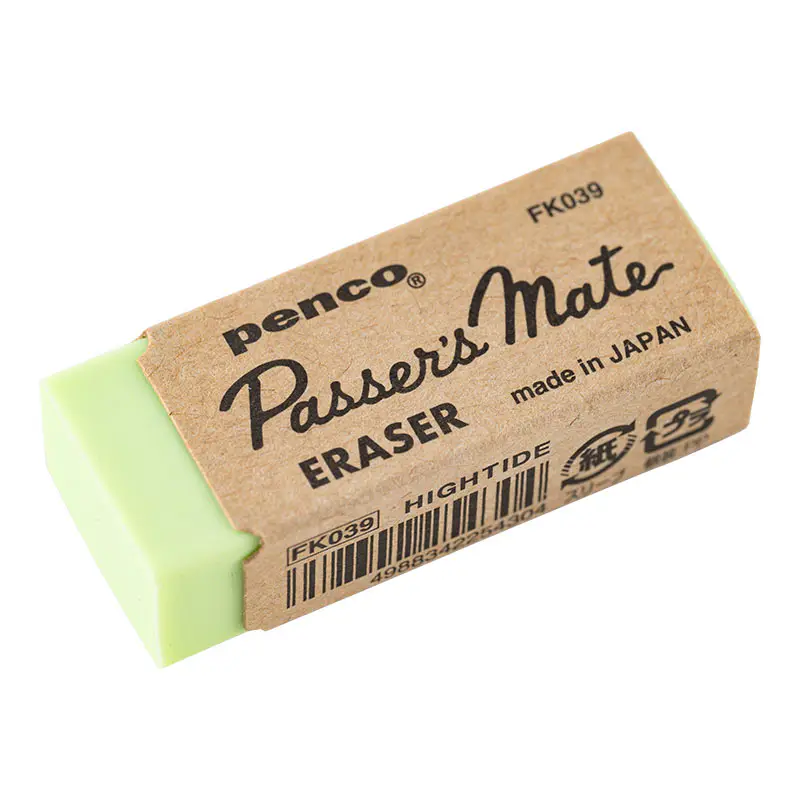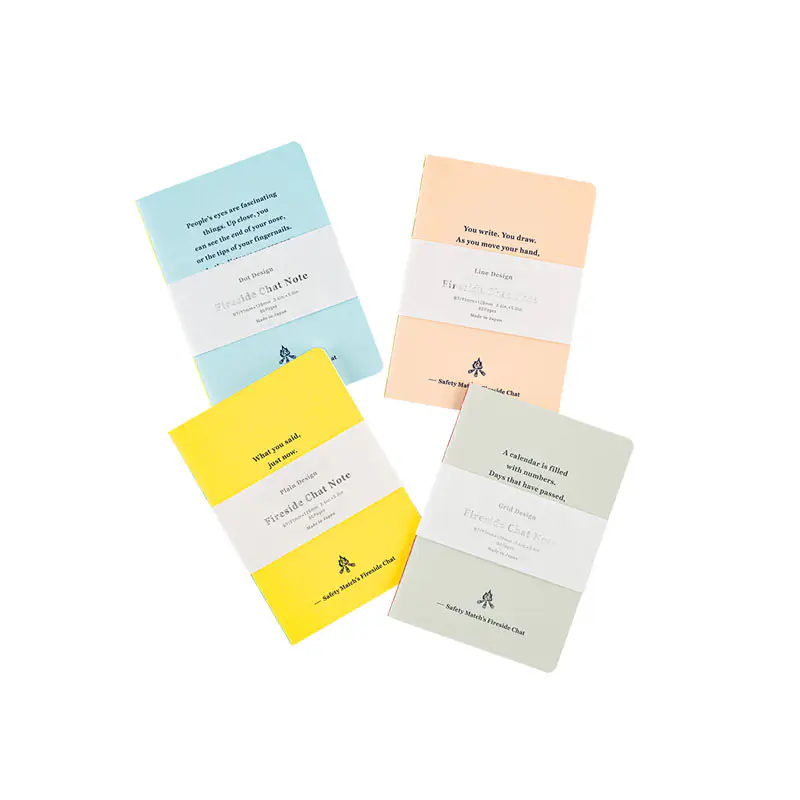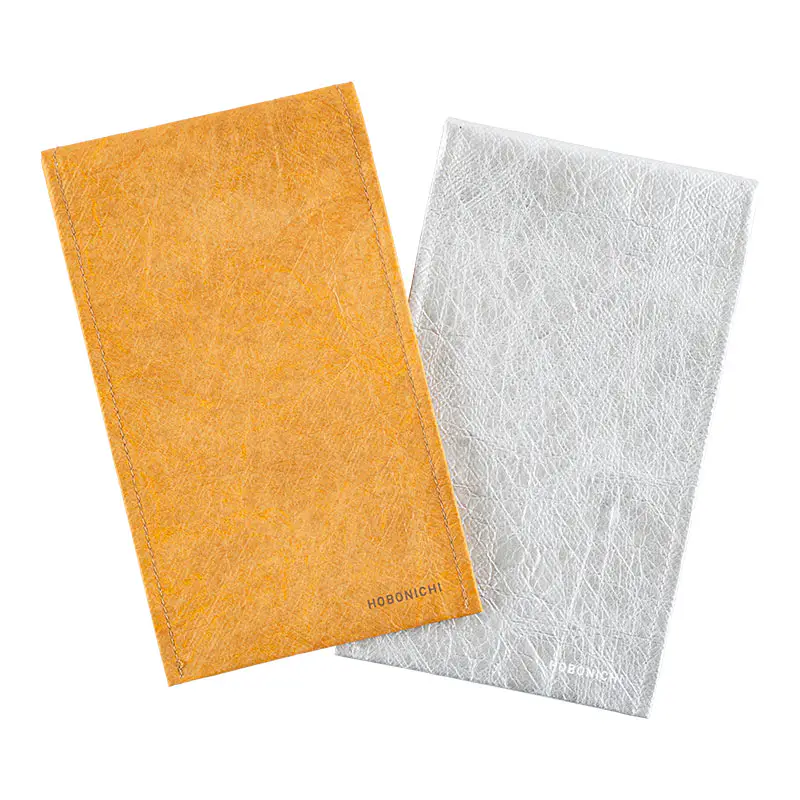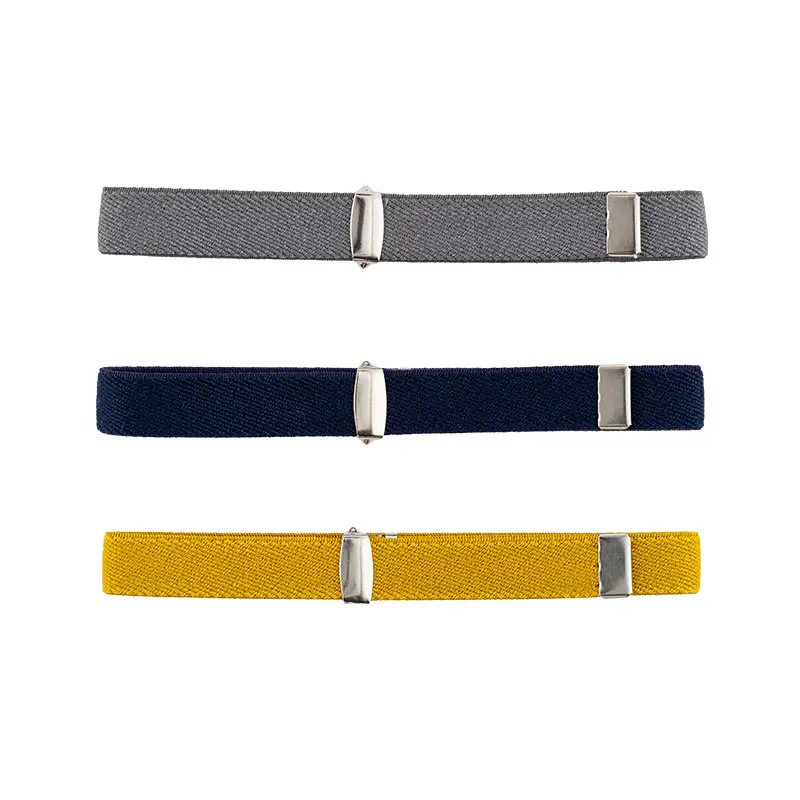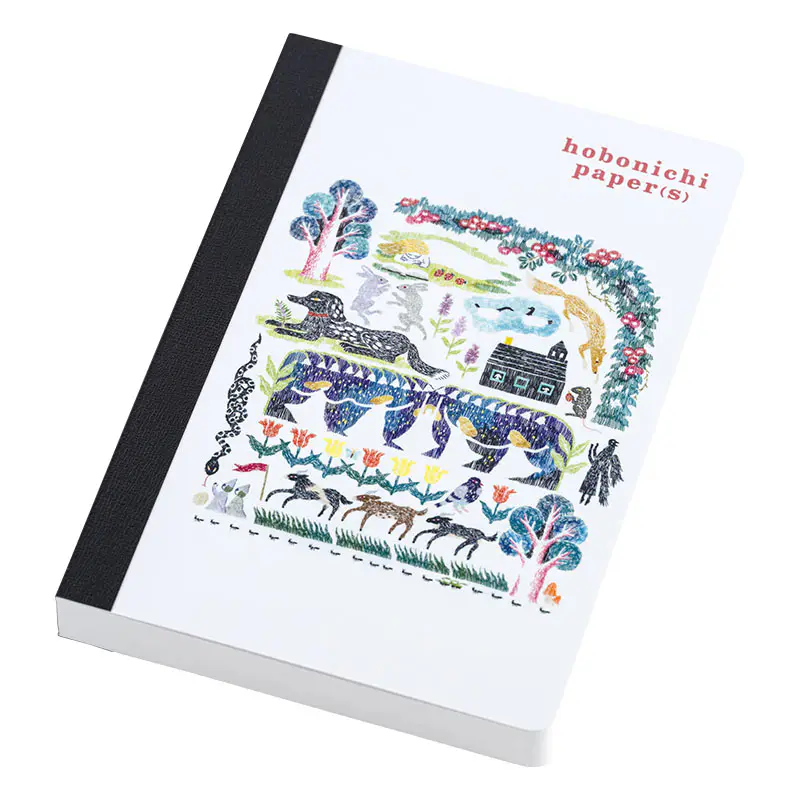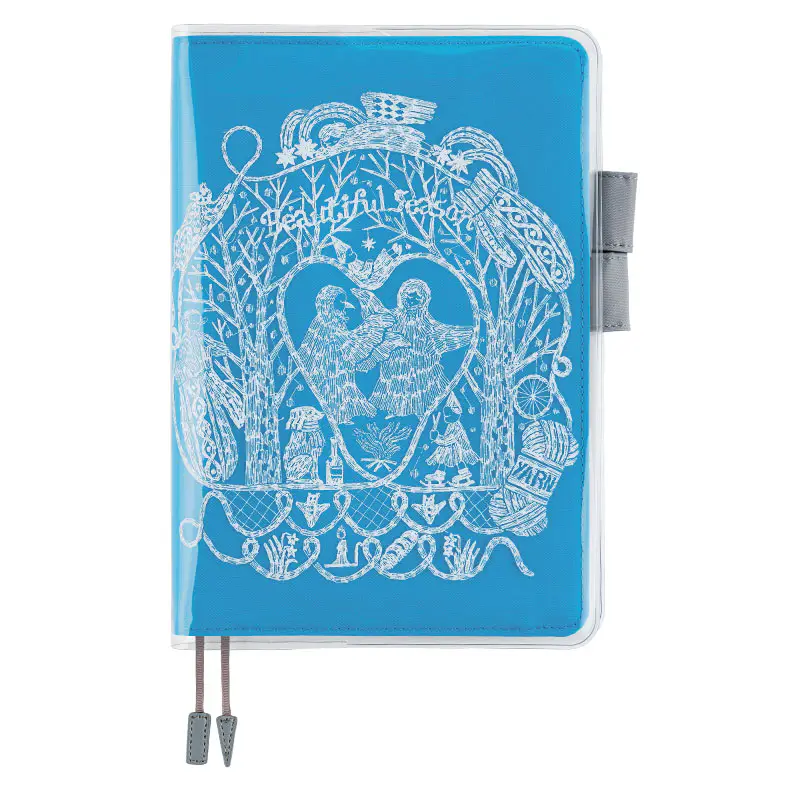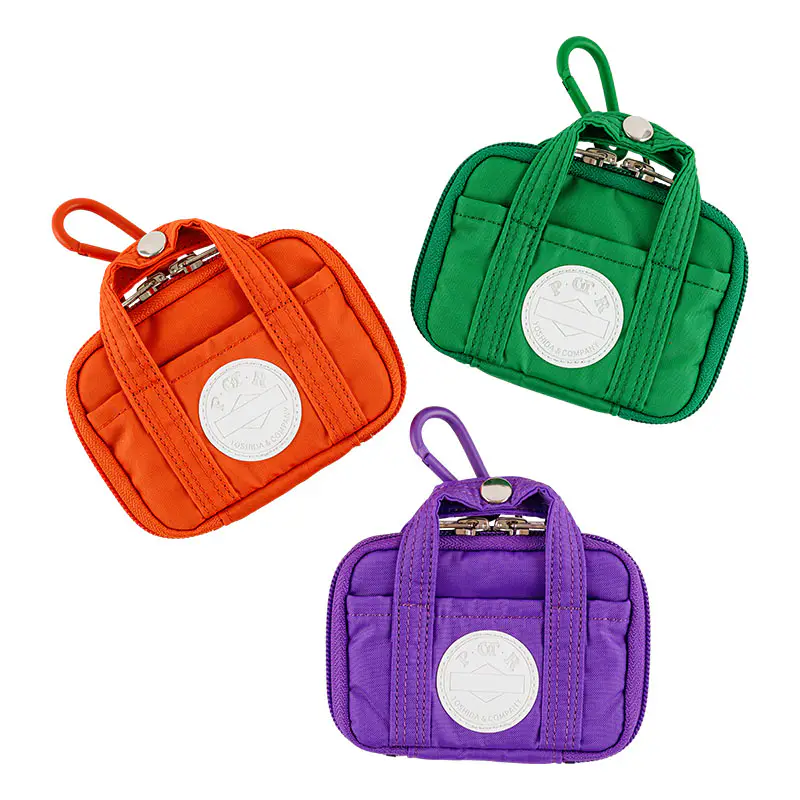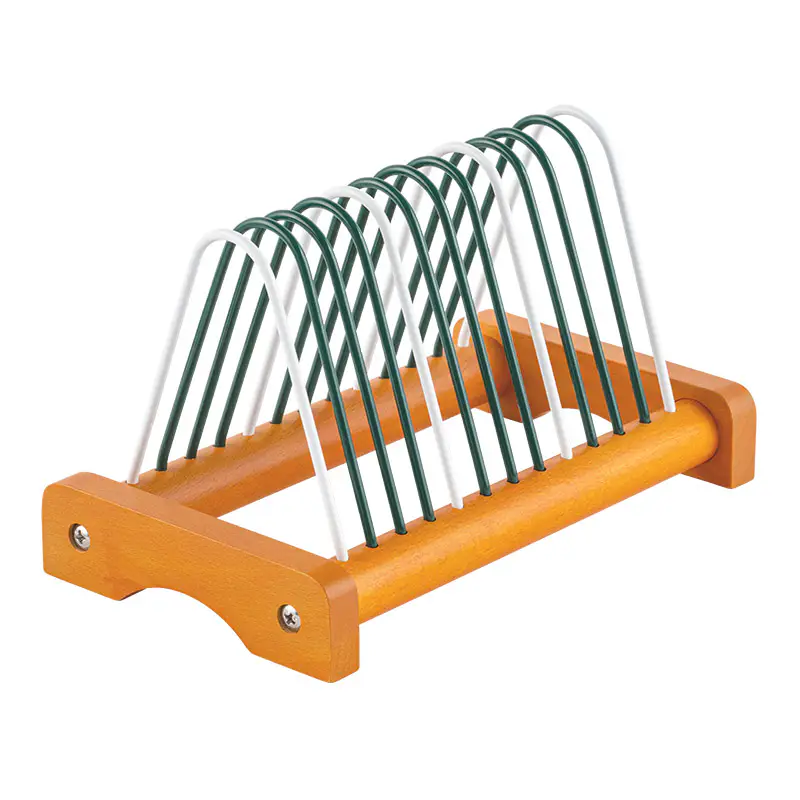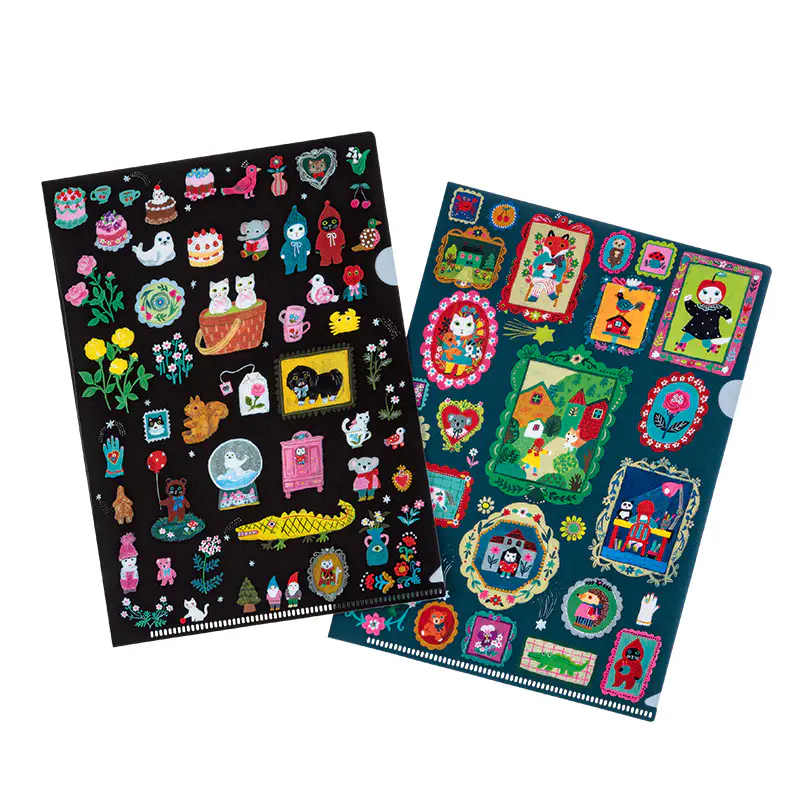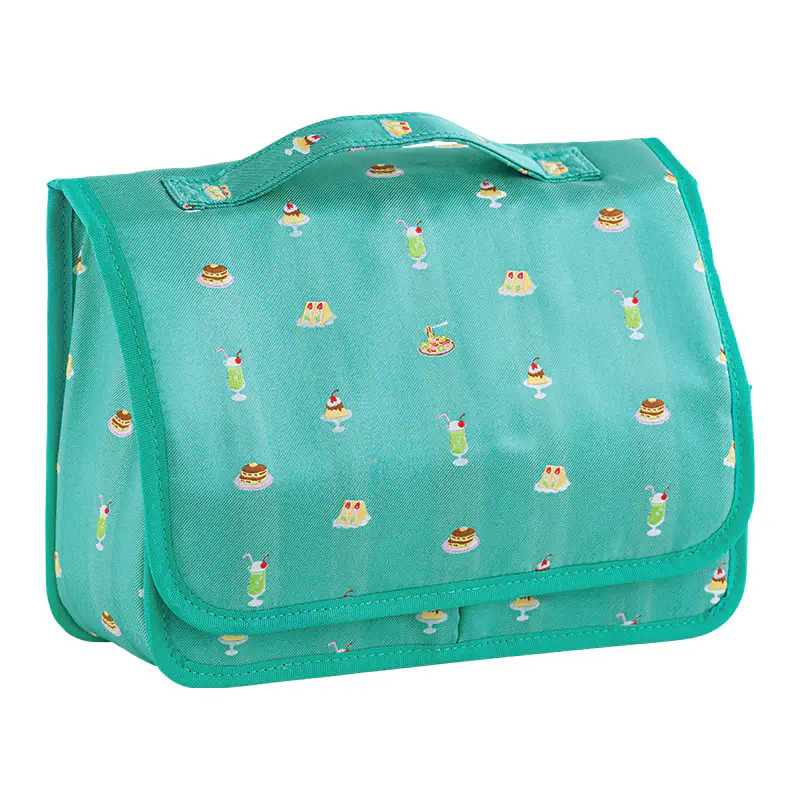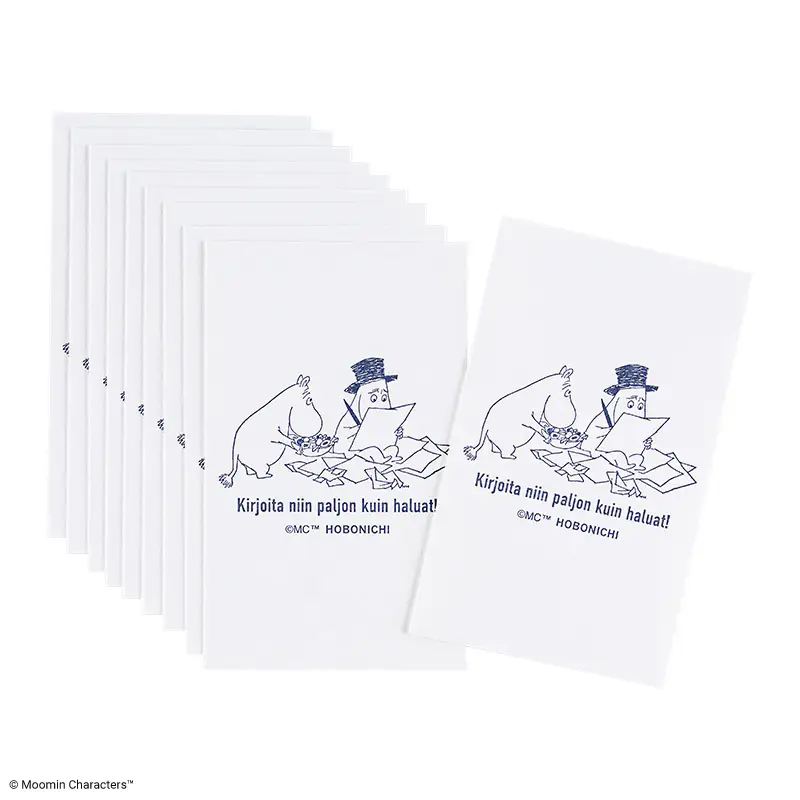Hobonichi Techo 2026 English Planner Book (January Start)A6 Size / Daily / Jan start / Mon start
- 2026 New
- English
Select shop and brand Arts&Science owner Sonya Park directed the creation of this English-language Hobonichi Techo book, which has been refined and simplified to make it easy to use in all countries and languages. The refined layout, the color scheme of charcoal gray and red, and the bonus pages exclusive to the Planner are part of its charm.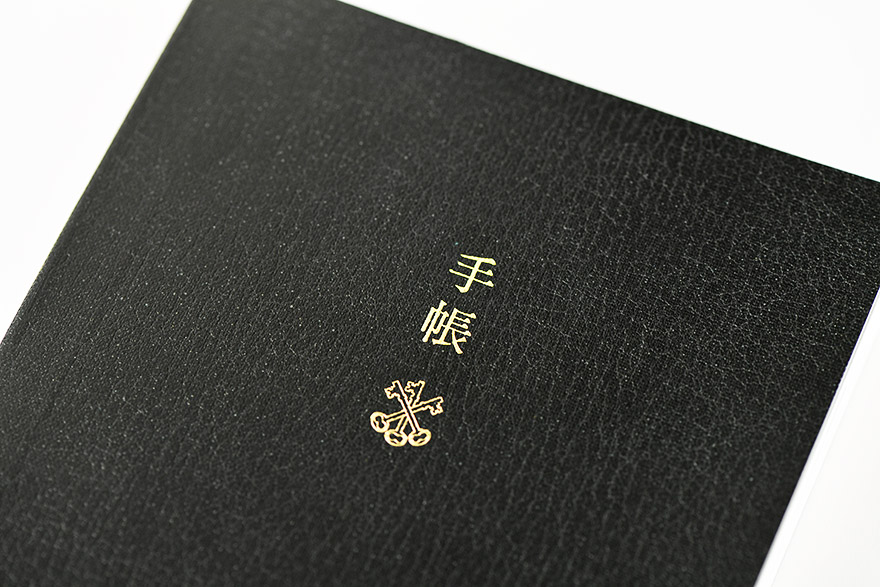
The book has a matte cover subtly foil-pressed with the Japanese characters for “techo” alongside the Arts&Science key logo.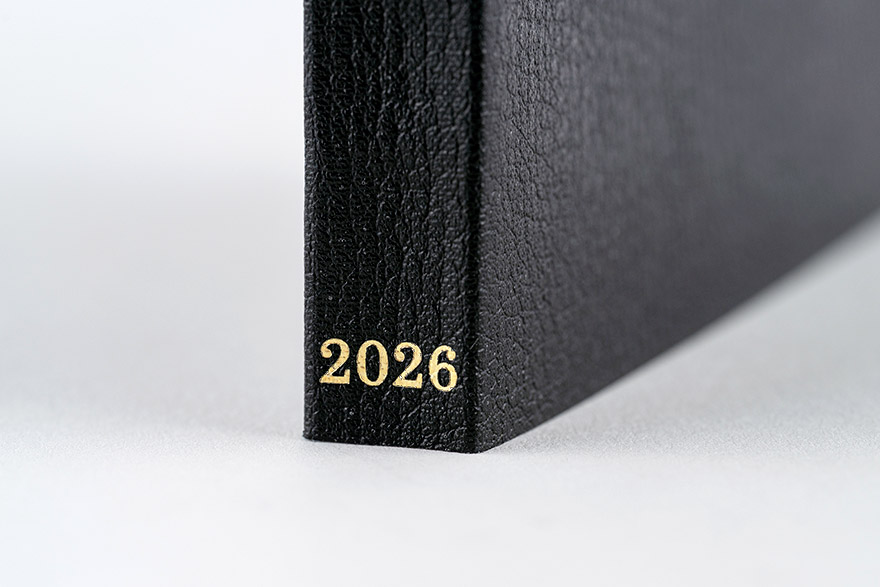
The book spine is foil-pressed in gold with the year 2026 and the “HOBO” logo for easy reference when placed in your bookshelf alongside other books.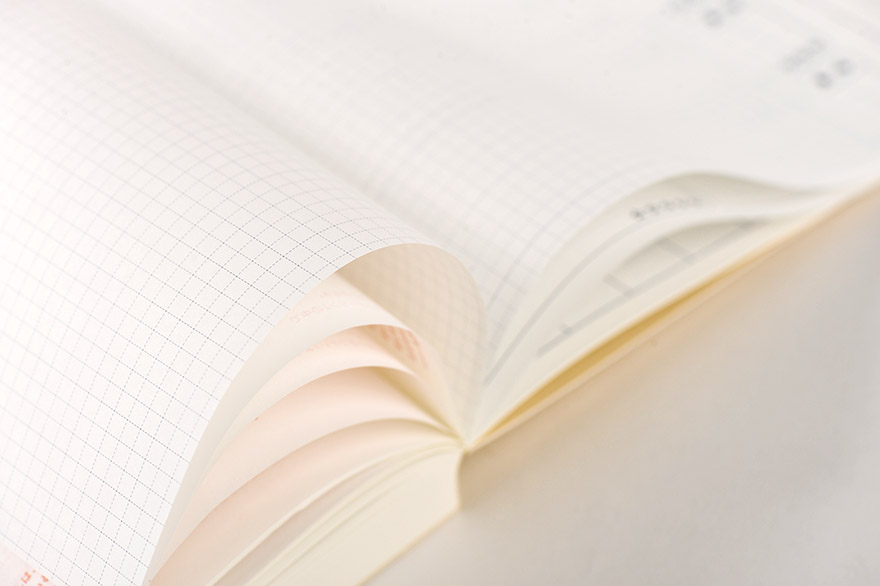
The book has the same thread-stitch binding as a dictionary, allowing it to lay flat open for comfortable writing. It stays flat even if you don’t hold it down.
The book uses thin and light yet durable Tomoe River paper. It's characterized by its ability to hold ink well and provide a smooth writing experience.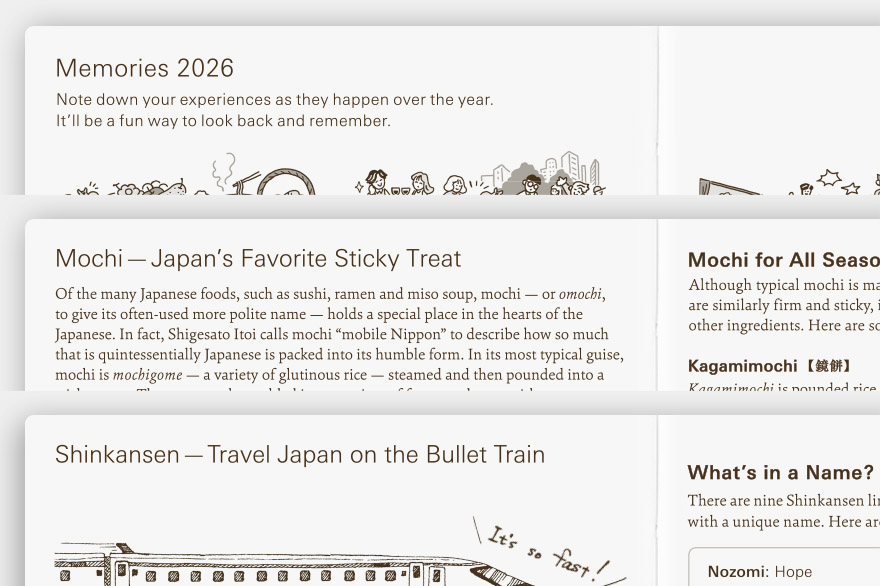
Other than the daily pages with lots of space to write, the book contains several sections that are great for schedule management, such as a yearly calendar, monthly calendar, and yearly index page.
The bonus pages at the back of the book have been updated for the 2026 edition with pages such as Memories 2026, Mochi―Japan’s Favorite Sticky Treat, and Shinkansen―Travel Japan on the Bullet Train.
In anticipation of this book being used in various countries around the world, the calendars do not list holidays.
(See the Exploring Each Type page for more details.)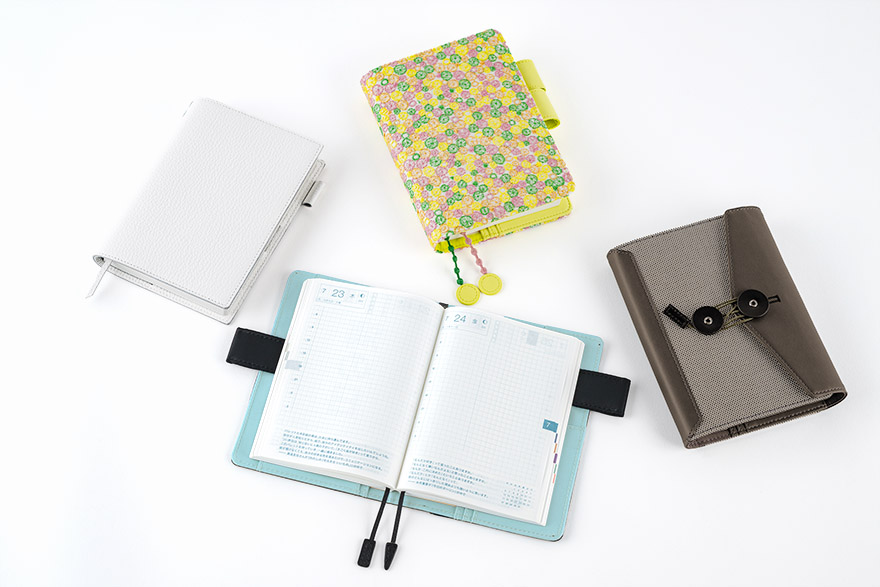
The Hobonichi Techo is used by pairing a techo book with a cover. Pick out a cover of your choice from our large selection of Hobonichi Techo covers, including those created in collaboration with Arts&Science.
See cover lineup
Staff List
- Photographer
- Product Detail: Hiroyuki Oe
Discover more (Techo)
![]()
- ¥16,720 - ¥17,710
- ¥14,300
![]()
- ¥5,170 - ¥6,160
- ¥2,750
![]()
- ¥7,700 - ¥8,690
- ¥5,280
![]()
- ¥6,710 - ¥7,700
- ¥4,290
![]()
- ¥4,620 - ¥5,610
- ¥2,200
![]()
- ¥5,830 - ¥6,820
- ¥3,410
![]()
- ¥4,730 - ¥5,720
- ¥2,310
![]()
- ¥4,730 - ¥5,720
- ¥2,310
![]()
- ¥8,360 - ¥9,350
- ¥5,940
![]()
- ¥10,120 - ¥11,110
- ¥7,700
![]()
- ¥7,700 - ¥8,690
- ¥5,280
![]()
- ¥20,020 - ¥21,010
- ¥17,600
Discover more (Accessories)
![]()
- ¥462 - ¥682
![]()
- ¥132
![]()
- ¥660 - ¥2,640
![]()
- ¥1,270
![]()
- ¥605
![]()
- ¥720
![]()
- ¥880
![]()
- ¥13,200
![]()
- ¥4,180
![]()
- ¥682
![]()
- ¥4,400
![]()
- ¥880
Specifications*Specifications may vary slightly
Size H: 148 x W: 105 x T: 15 mm / H: 5.8" x W: 4.1" x T: 0.6" Weight Approx. 195 g Main material Paper Compatible Techo Covers
- Book (Planner / English / January Start)
Size A6 size
H: 148 x W: 105 x T: 15 mm / H: 5.8"" x W: 4.1"" x T: 0.6""
*Actual book size may vary slightlyWeight Approx. 190 g Language English Pages 448 pages Paper Type / Binding Thin, light Tomoe River paper that is smooth to write on and designed for planners / Stitch-binding Graph Paper Size 4 mm Start of Week Monday-start week Yearly Calendar 2026, 2027 Yearly Index Dec. 2025 - Mar. 2027 (8 pages) Monthly Calendar Dec. 2025 - Mar. 2027 (32 pages) Daily Pages Jan. 1 - Dec. 31, 2026 (377 pages)
*A page is included at the beginning of each month to help in planning ahead.
*Every two-page daily page spread includes one daily quote.
*Includes a mini monthly calendar at the bottom right of every two-page spread (Monday-start).
*Additionally, a blank two-page spread is featured at the beginning to provide a free area when starting out the book.Daily Quotes One quote per two-page spread (English) Weekly Pages Not included Memo Pages 14 pages Bonus Pages Important Contacts / International Size Charts / The Ultimate Packing List / My 100 / Memories 2026 / Mochi - Japan’s Favorite Sticky Treat / Shinkansen - Travel Japan on the Bullet Train / Personal Notes Listed Information Day of the year / Week of the year (listed on monthly calendars and daily pages) / Moon phase (daily pages include every phase, monthly calendars only include full and new moon) Other See the Exploring Each Type page for more details
User recommendations
If you’ve used any of these products, we welcome your notes on what you like about them or what led you to buy them so we can share it with customers who are currently considering these products. We’d also love to welcome comments from customers who purchased their techo outside the Hobonichi Store or received their book as a gift.
Please Read Before You Buy
We’ve compiled a list of warnings, potential issues, and tips to keep in mind for this particular product. Additionally, the color of the product may be slightly different in actuality than compared to how it appeared on a computer or smartphone screen.
- About the paper used (techo)
The Tomoe River paper designed for planners is known for its thinness and smooth writing surface. However, depending on the type and amount of ink or pen used—as well as environmental conditions—some ink may bleed through or take longer to dry. We recommend testing your pens on an inconspicuous area first, or using a pencil board or blotting paper for best results.
